Turtles make fascinating and rewarding pets, offering a unique combination of prehistoric charm and gentle temperament that captivates many animal enthusiasts. For beginners venturing into turtle ownership, selecting a docile species is crucial for a positive experience. Unlike some more demanding reptile pets, the right turtle can be relatively low-maintenance while still providing years of companionship, often decades, with proper care. This guide explores the most gentle and manageable turtle species that are ideally suited for novice owners, highlighting their distinctive traits, care requirements, and the special considerations that make them perfect first-time companions. Whether you’re drawn to their peaceful nature or their ancient mystique, these beginner-friendly turtles will help you start your reptile-keeping journey with confidence and joy.
Red-Eared Sliders: The Popular Choice
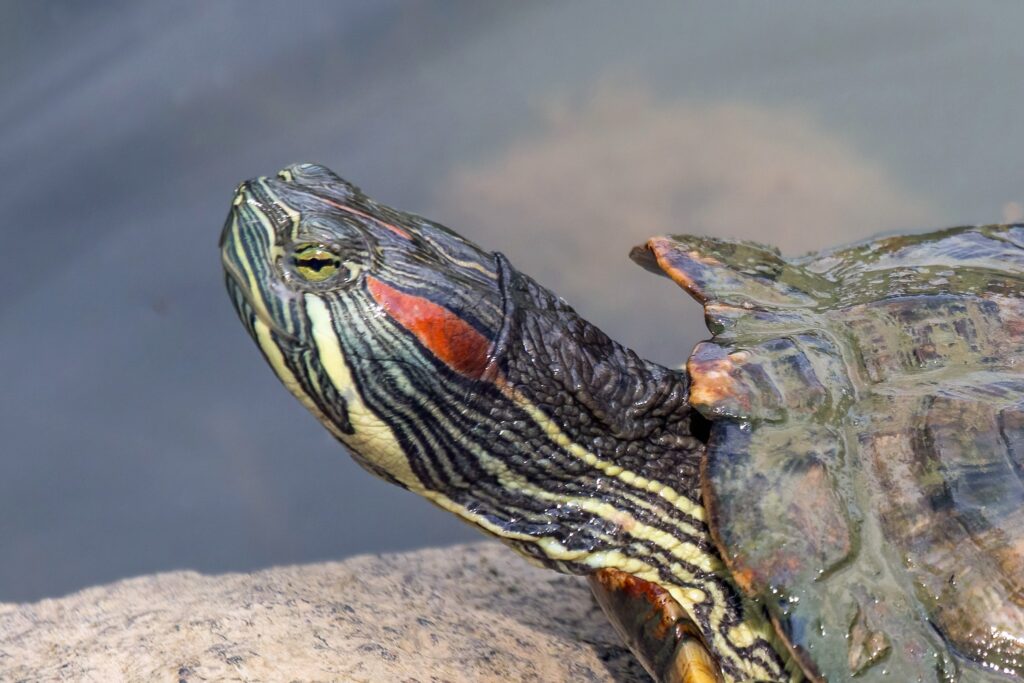
Red-eared sliders remain one of the most commonly recommended turtles for beginners due to their adaptable nature and relatively straightforward care requirements. These turtles, recognizable by the distinctive red patches behind their eyes, are known for their generally calm demeanor when handled regularly from a young age. They’re remarkably resilient creatures that can forgive minor care mistakes that new owners might make while learning. Red-eared sliders are also widely available in the pet trade, making them accessible to most first-time turtle enthusiasts regardless of location. Their moderate adult size of 7-12 inches strikes a good balance between being substantial enough to handle yet not overwhelmingly large for basic housing setups.
Painted Turtles: Colorful and Gentle
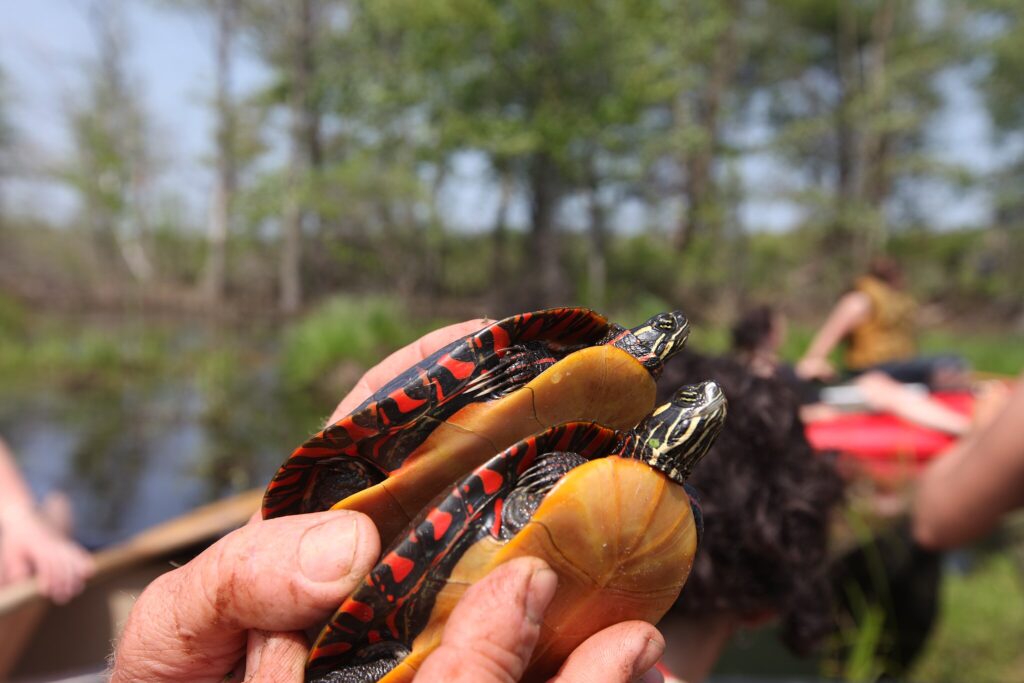
Painted turtles stand out as excellent first-time pets due to their striking appearance and particularly gentle nature. Their shells showcase beautiful combinations of red, yellow, and olive patterns that make them visually appealing additions to any home aquarium. These North American natives typically grow to a manageable 4-10 inches, depending on the subspecies, making them suitable for moderate-sized setups. Painted turtles are known for their curious yet calm temperament, often becoming quite interactive with their owners during feeding time. They adapt well to captivity and generally show less stress-related behavior than some other aquatic species, making the adjustment period smoother for both turtle and keeper.
Russian Tortoises: Desert Dwellers with Personality
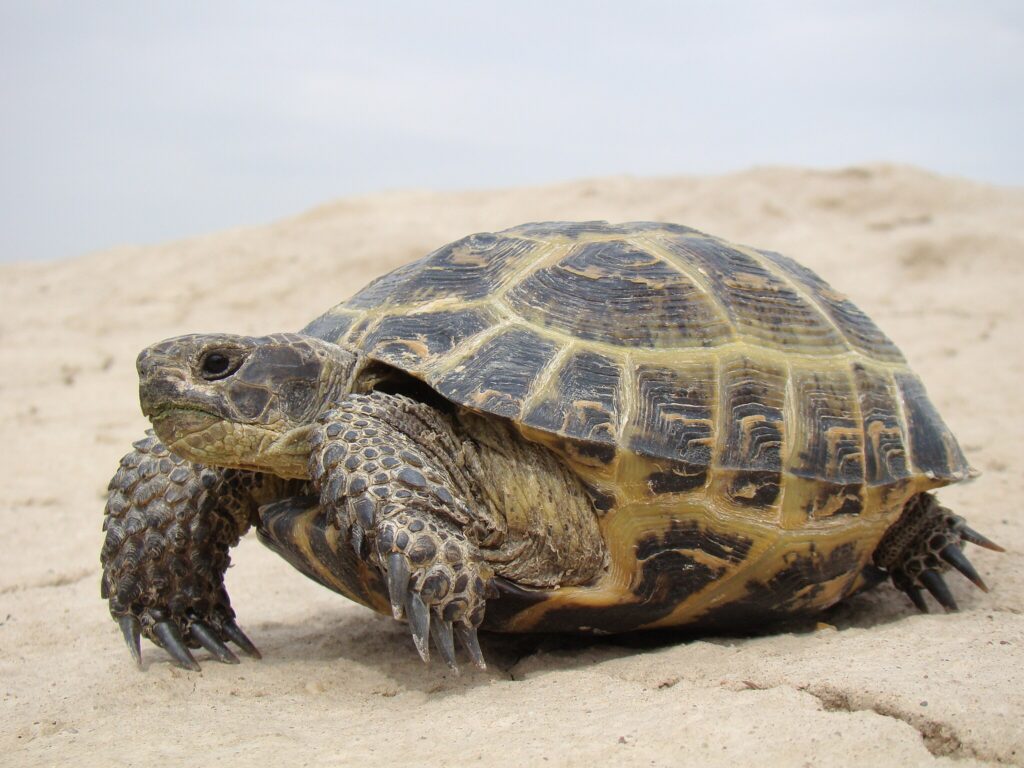
Russian tortoises offer the perfect introduction to land-dwelling chelonians with their hardy constitution and engaging personalities. These compact tortoises typically reach only 8-10 inches in length, making them ideal for keepers with limited space compared to larger tortoise species. Their natural habitat in Central Asia has prepared them to be adaptable to various conditions, allowing them to thrive in both indoor and outdoor enclosures, depending on your climate. Russian tortoises are known for their curious and active behavior during the day, often developing recognizable personalities and even responding to their owners over time. Their primarily herbivorous diet centered around leafy greens and vegetables makes feeding straightforward and economical for new owners.
Eastern Box Turtles: Native Charm
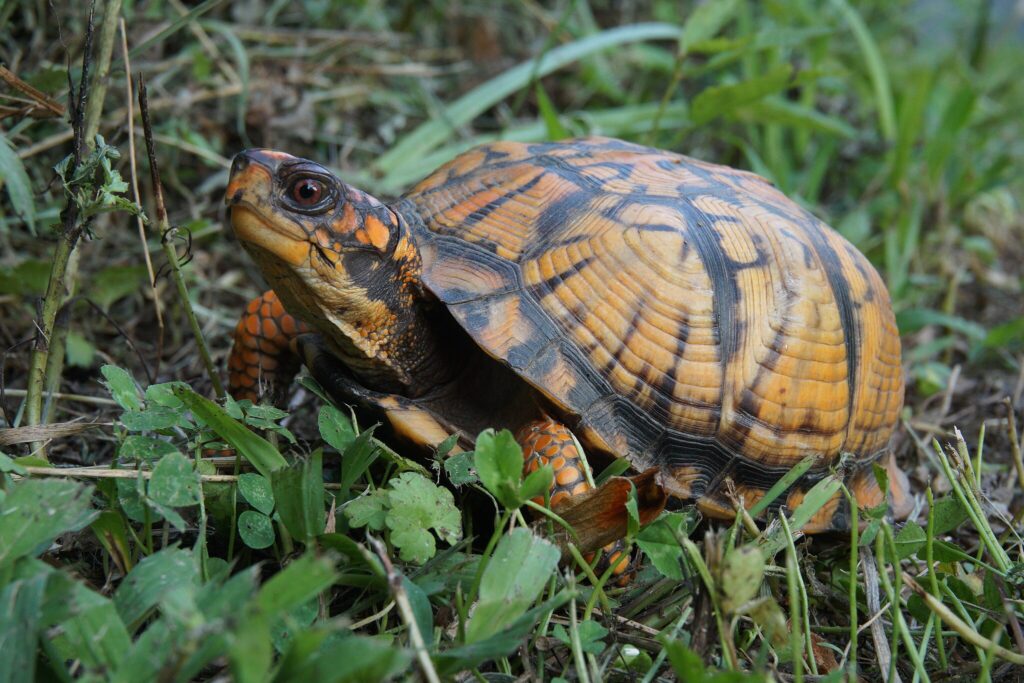
Eastern box turtles combine the appeal of both aquatic and terrestrial species, requiring a habitat that mimics their natural woodland environment with both dry land and shallow water areas. Their distinctive, high-domed shells with intricate yellow or orange patterns make them visually striking pets that rarely exceed 6 inches in length. These North American natives are known for their mild-mannered temperament and can become quite tame with regular, gentle handling sessions. Eastern box turtles are intelligent creatures that often recognize their caretakers and may even approach the front of their enclosure when their owner enters the room. It’s worth noting that their longevity can exceed 50 years with proper care, making them truly lifetime companions for dedicated owners.
Reeves Turtle: The Miniature Marvel
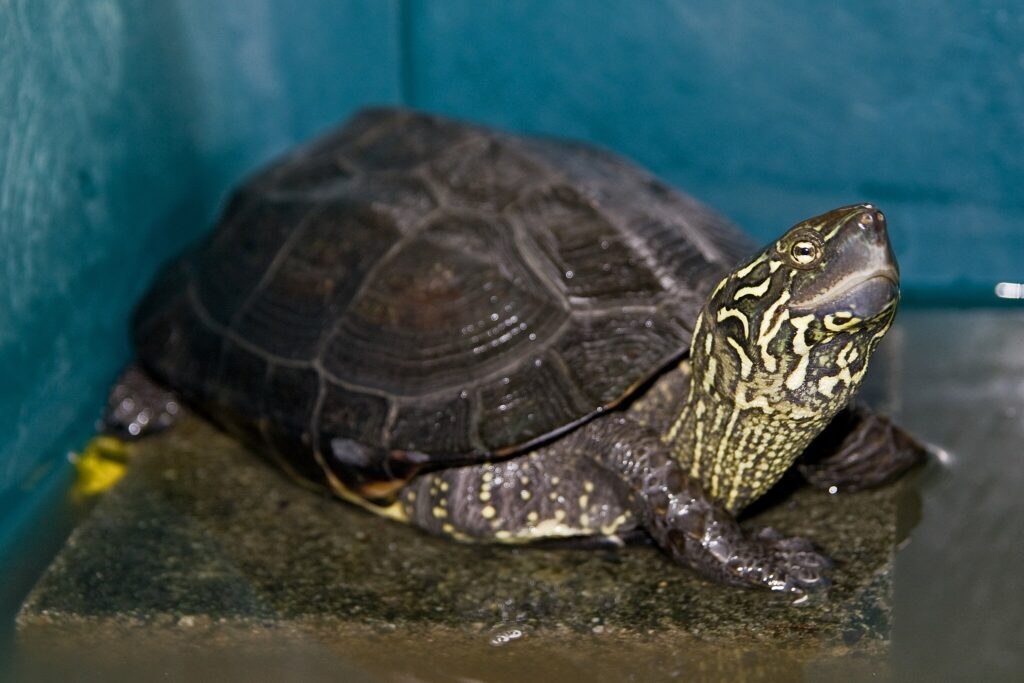
The Reeves turtle has earned its reputation as one of the best beginner species due to its small size and relatively simple care requirements. These Asian turtles rarely grow beyond 6 inches, making them perfect for keepers with space constraints who still want the joy of turtle ownership. Their active and alert nature means they’re often swimming or exploring their environment, providing endless entertainment value for their owners. Reeves turtles adapt well to captivity and tend to be less skittish than many other turtle species, often becoming comfortable with their keeper’s presence rather quickly. Their omnivorous diet offers flexibility in feeding options, allowing new owners to provide a varied and nutritionally complete diet with minimal specialized knowledge.
Mississippi Map Turtles: The Aquatic Specialists

Mississippi map turtles represent an excellent introduction to more specialized aquatic species, with their striking shell patterns resembling topographic maps that give them their common name. These turtles display significant sexual dimorphism, with females growing substantially larger (up to 10 inches) than males (typically 3-5 inches), allowing owners to choose the adult size that best fits their setup capabilities. Their primarily aquatic lifestyle means they require less complex habitat design than semi-aquatic species, focusing mainly on good water quality and basking areas. Map turtles tend to become quite comfortable with routine and may recognize their keepers, especially at feeding time when their typically shy nature gives way to eager anticipation. Their specialized diet focusing on mollusks and aquatic invertebrates in the wild can be supplemented with commercial turtle pellets, making feeding management straightforward for new owners.
Musk Turtles: Tiny Treasures

Musk turtles, often called “stinkpots” due to their defensive odor-producing glands (rarely used in captivity), make surprisingly excellent pets for beginners despite their somewhat intimidating nickname. These diminutive turtles rarely exceed 5 inches in length, making them among the smallest turtle species commonly available to hobbyists. Their predominantly aquatic lifestyle means they require less elaborate tank setups than species that need extensive land areas, though they still need reliable basking opportunities. Musk turtles are known for their curious and sometimes comical behavior, often climbing on submerged objects and investigating their surroundings with enthusiasm. Their modest space requirements mean they can be kept in smaller aquariums than many other species, making them accessible to apartment dwellers or those with limited room for large enclosures.
Greek Tortoises: Mediterranean Miniatures
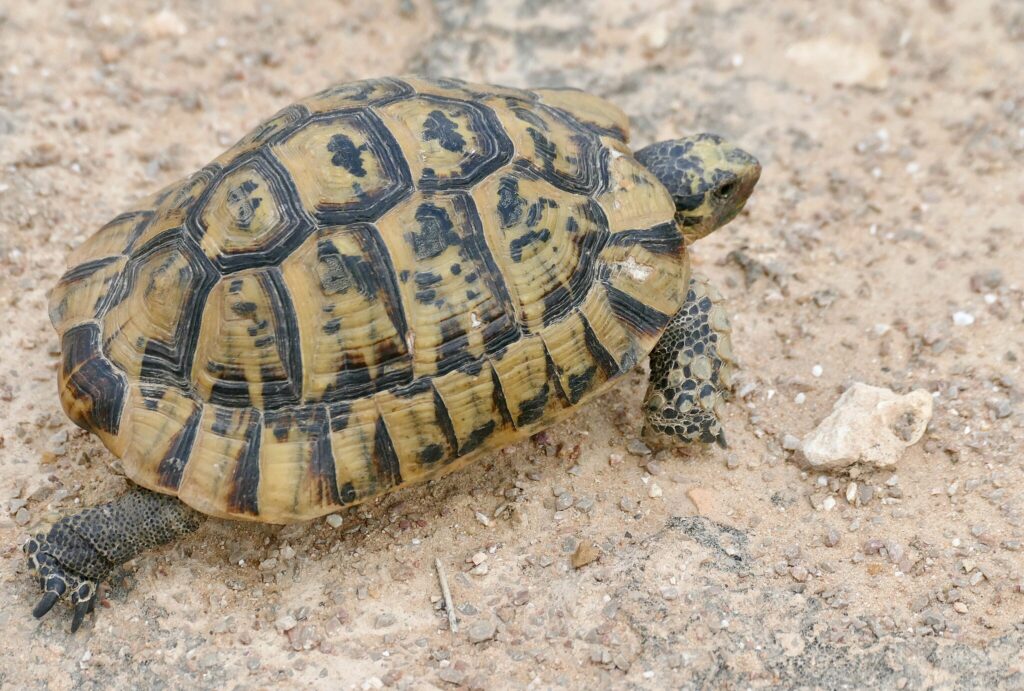
Greek tortoises represent an excellent tortoise option for beginners due to their manageable size and relatively straightforward care requirements compared to larger tortoise species. These Mediterranean natives typically reach only 5-8 inches, making them suitable for moderately sized outdoor pens or indoor enclosures with adequate space. Their docile nature makes handling sessions a pleasant experience for both tortoise and keeper, though like all reptiles, they prefer limited handling focused on necessary health checks and enclosure maintenance. Greek tortoises thrive on a diet primarily consisting of grasses, weeds, and leafy greens, making their nutrition plan straightforward to implement for new owners. Their adaptability to various climate conditions (within reason) makes them suitable pets across many regions, provided basic temperature and lighting requirements are met.
Understanding Basic Turtle Care Requirements
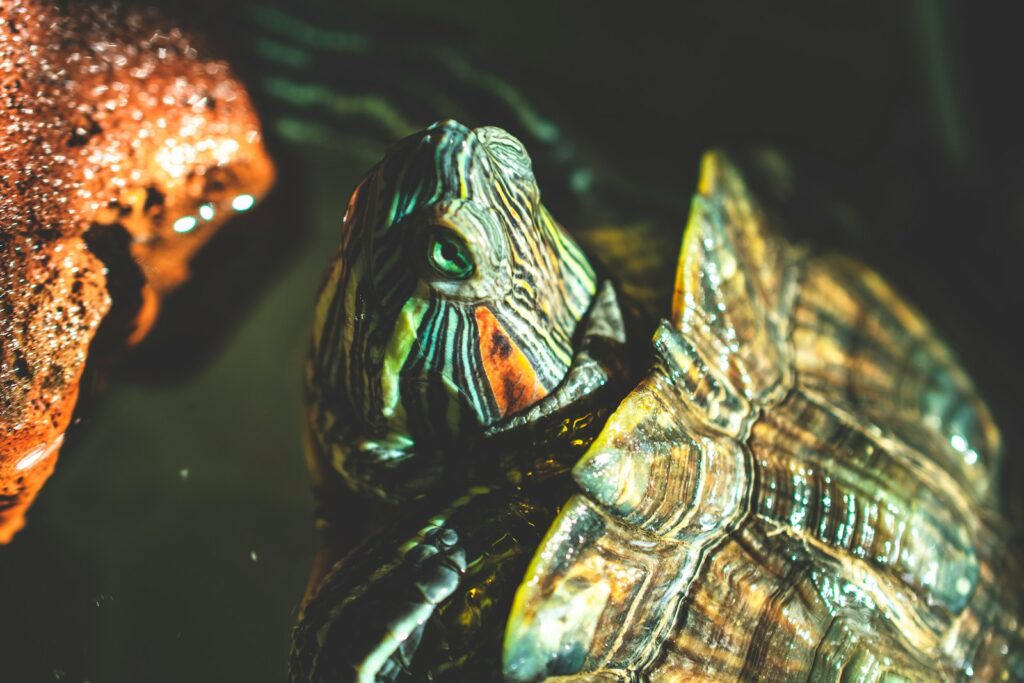
All turtles, regardless of species, require specific environmental conditions to thrive, including proper temperature gradients with both warm and cool areas. UVB lighting is essential for most species to properly metabolize calcium and prevent metabolic bone disease, a common ailment in poorly kept reptiles. Habitat design should always reflect the natural environment of the species, whether that means primarily aquatic setups with excellent filtration or terrestrial enclosures with appropriate substrate and hiding places. Diet requirements vary significantly between species but generally involve a balance of commercial turtle foods, fresh vegetables, and occasional protein sources, depending on the species’ natural feeding behaviors. Perhaps most importantly, potential owners should understand that turtles are long-lived animals, with many species routinely living 20-50+ years, making them truly lifetime commitments rather than temporary pets.
Housing Considerations for Beginner Turtles
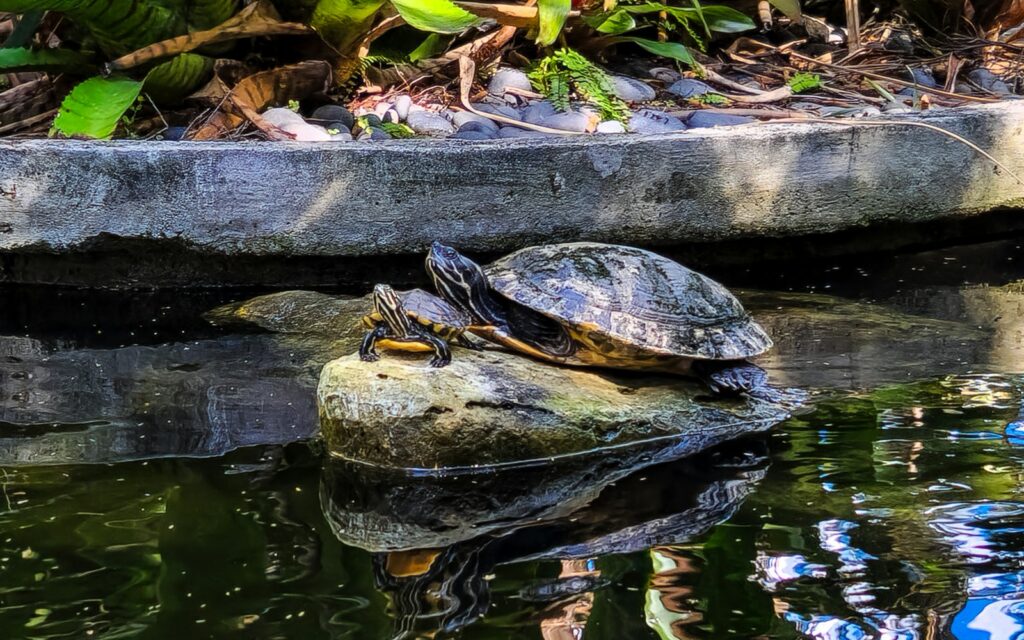
Creating appropriate housing for your first turtle is crucial to its health and directly impacts how docile and manageable your pet will be. Aquatic and semi-aquatic species require tanks that provide water deep enough to swim comfortably along with secure basking platforms where they can completely dry off under heat and UVB lamps. Terrestrial species need enclosures with proper substrate depth for natural behaviors like digging, along with temperature gradients that allow them to self-regulate their body temperature. Size requirements should always be calculated based on the turtle’s adult dimensions rather than their current size, as many species grow substantially larger than their juvenile form. Filtration systems for aquatic setups must be robust and typically rated for tanks two to three times the actual water volume to handle the heavy bioload turtles produce compared to fish.
Dietary Needs of Docile Turtle Species
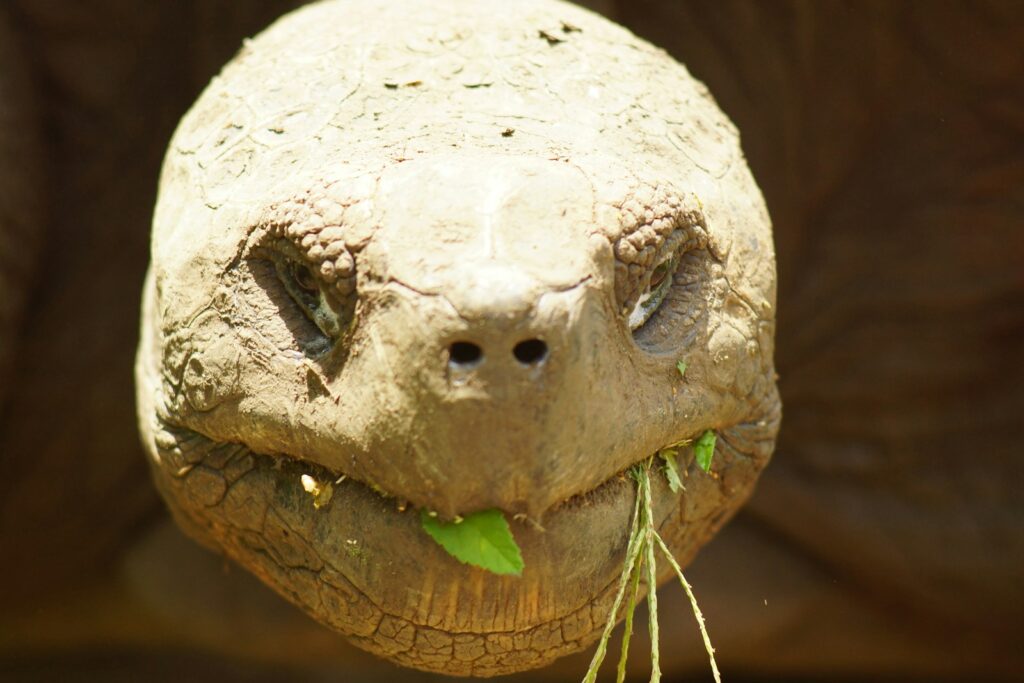
Providing proper nutrition forms the cornerstone of maintaining a healthy, docile turtle with minimal behavioral issues or health complications. Aquatic species like sliders, painted turtles, and map turtles generally require a diet that shifts from primarily protein-based foods as juveniles toward more plant matter as they mature, mirroring their natural dietary evolution. Terrestrial species such as Russian and Greek tortoises thrive on high-fiber, low-protein diets centered around grasses, weeds, and leafy greens, with commercial tortoise foods serving as supplements rather than dietary staples. Calcium supplementation is crucial for all turtle species, typically provided through cuttlebone, calcium powder, or specialized supplements that support healthy shell and bone development. Creating varied feeding routines that incorporate different acceptable foods prevents nutritional deficiencies while also providing environmental enrichment that contributes to a content, even-tempered pet.
Common Health Issues in Pet Turtles

Even docile, beginner-friendly turtle species can develop health issues if their husbandry requirements aren’t properly met, with respiratory infections being among the most common problems resulting from inadequate temperature gradients or excessive humidity levels. Shell problems, including pyramiding in tortoises or soft shell in aquatic species often indicate nutritional deficiencies, particularly relating to calcium metabolism and UVB exposure. Parasitic infections can occur especially in wild-caught specimens, making it advantageous for beginners to select captive-bred turtles from reputable breeders when possible. Eye infections frequently develop in aquatic species kept in poor water conditions, manifesting as swollen, closed eyes that require prompt veterinary attention to prevent permanent damage. New owners should locate an exotic veterinarian with reptile experience before purchasing their turtle to ensure medical care is available when needed.
Legal Considerations for Turtle Ownership
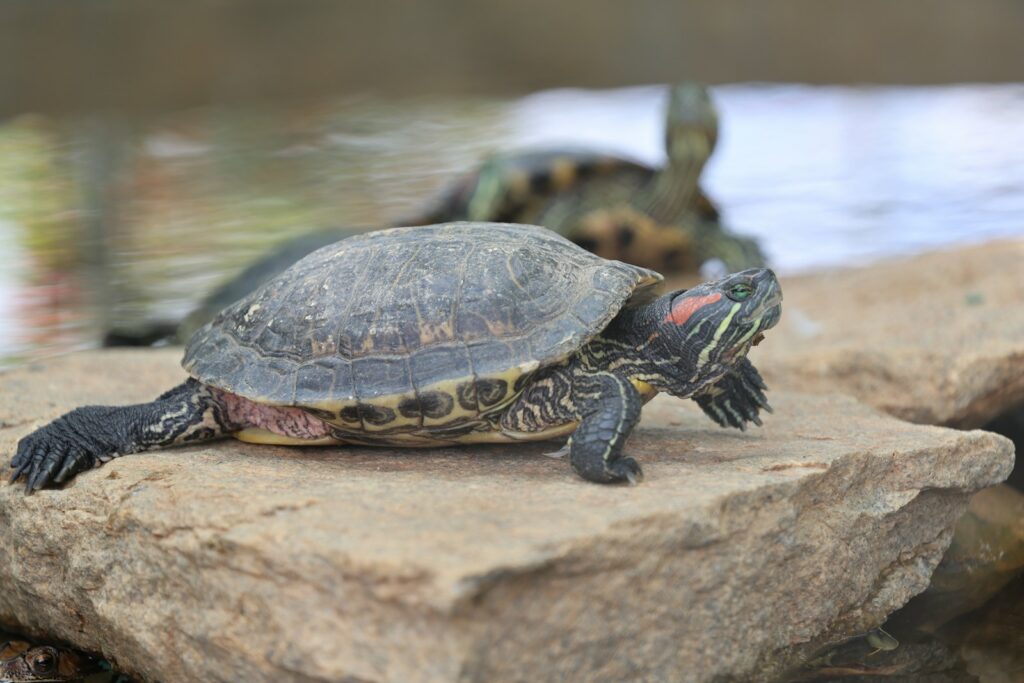
Prospective turtle owners must research local regulations before bringing home their new pet, as many jurisdictions have specific laws regarding turtle ownership. In the United States, federal regulations prohibit the sale of turtles with shell lengths under four inches, a measure intended to reduce salmonella transmission to children who might put small turtles in their mouths. Some states have additional restrictions on certain species, particularly those native to the region that might be protected or those considered potentially invasive if released. International treaties like CITES (Convention on International Trade in Endangered Species) regulate the trade of many turtle species, making proper documentation essential when purchasing certain turtles, especially tortoises. Responsible ownership includes never releasing pet turtles into the wild, regardless of their origin, as this can devastate local ecosystems through competition with native species or the introduction of diseases.
Conclusion

Selecting the right docile turtle species as a first-time owner sets the foundation for a rewarding relationship that can span decades. The species highlighted in this guide – from the popular Red-eared Slider to the compact Musk Turtle – offer gentle temperaments and manageable care requirements that make the learning curve more accessible for beginners. Remember that while these turtles may be considered “beginner-friendly,” they still require dedicated care, proper housing, and a long-term commitment. By researching thoroughly before bringing home your shelled companion and providing the appropriate environment, nutrition, and veterinary care, you’ll be rewarded with a fascinating pet that brings joy and wonder to your home for many years to come. The journey of turtle ownership starts with choosing the right species, but it continues with the ongoing education and care that ensures these ancient creatures thrive under your stewardship.

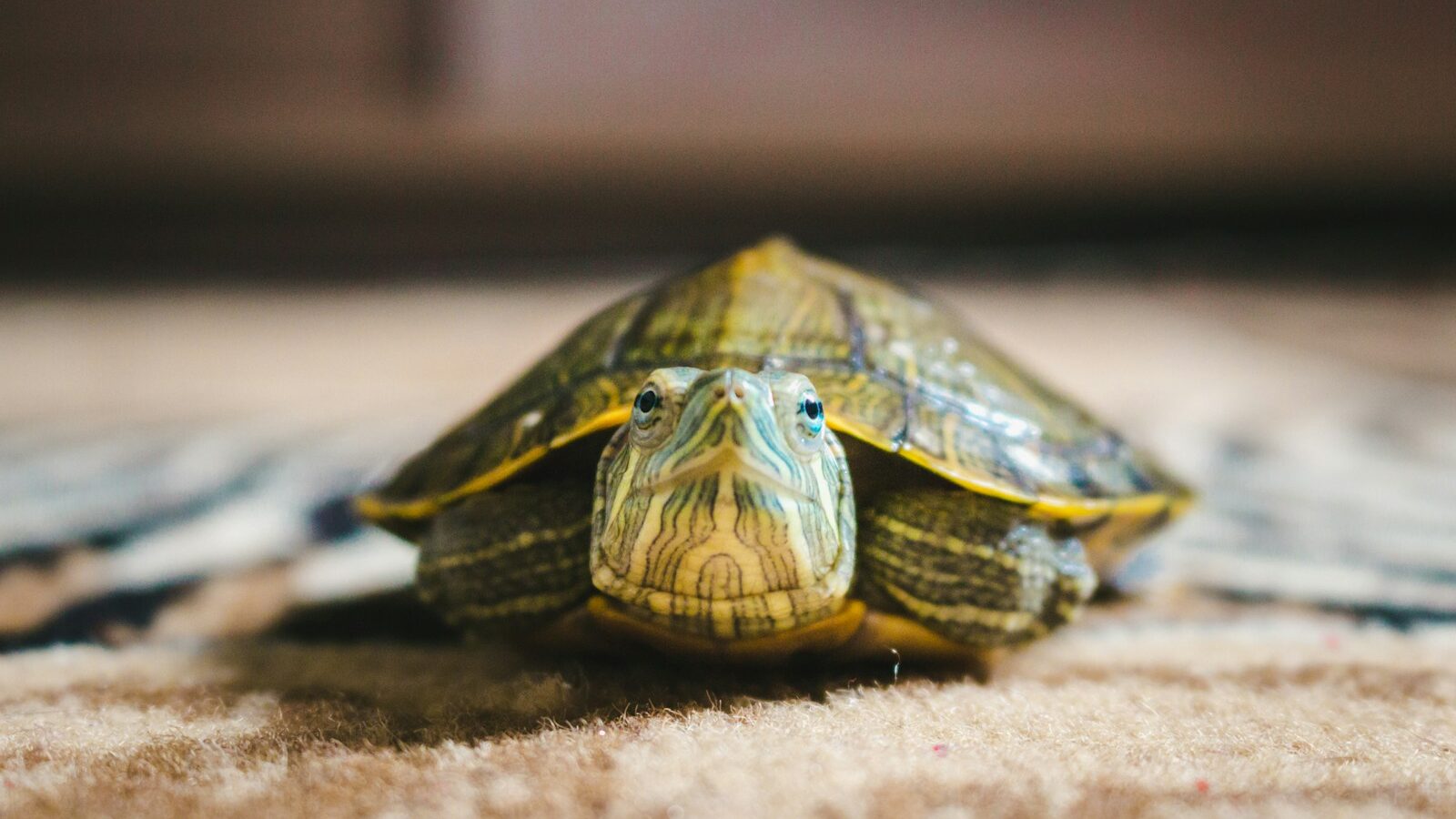




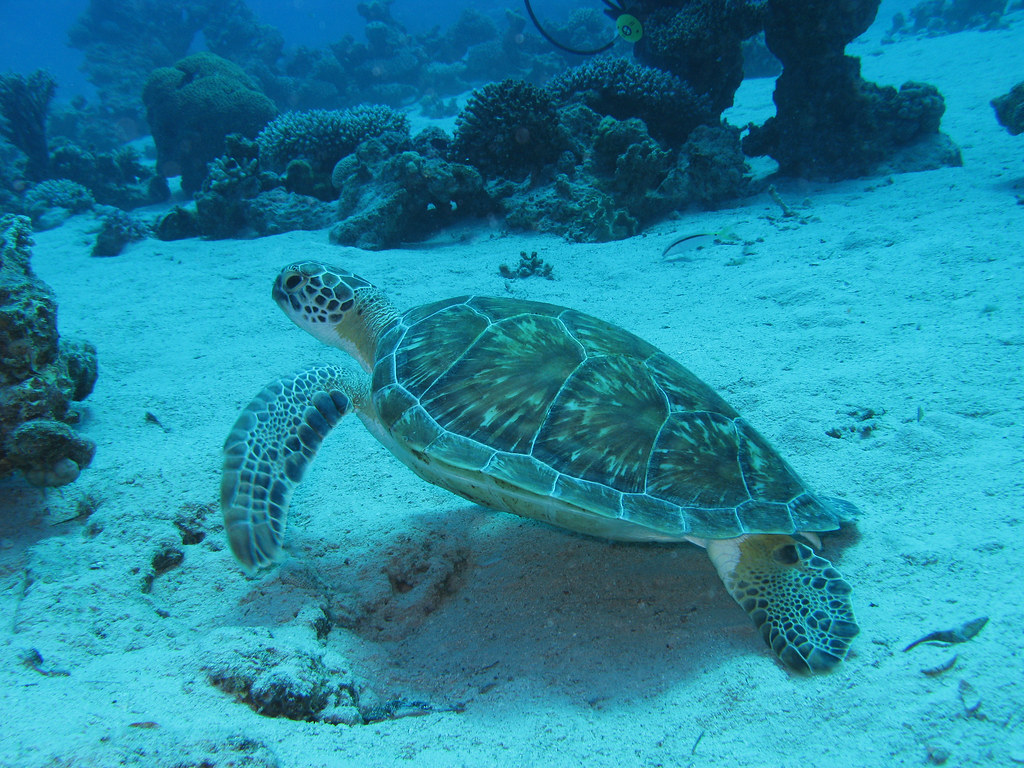


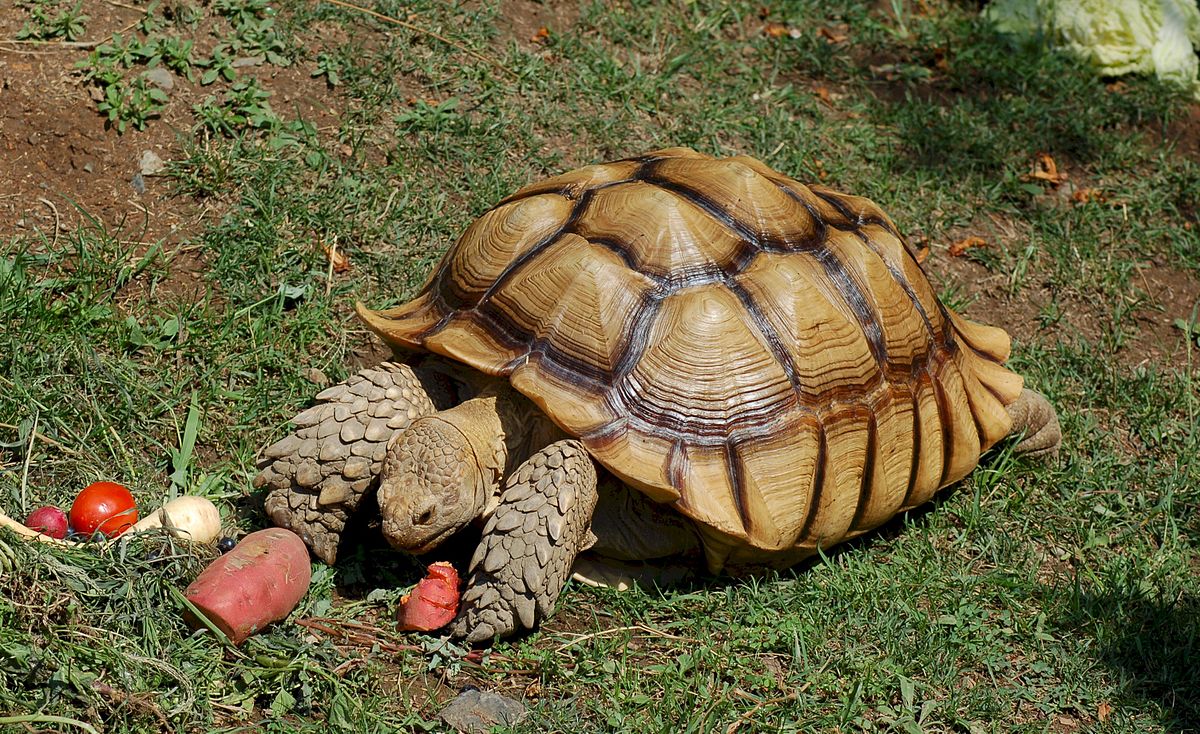
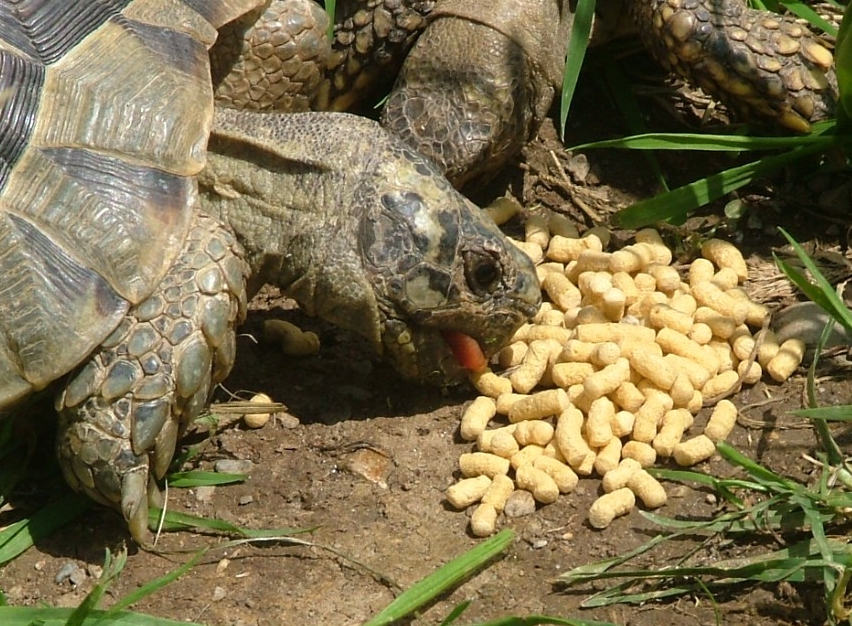
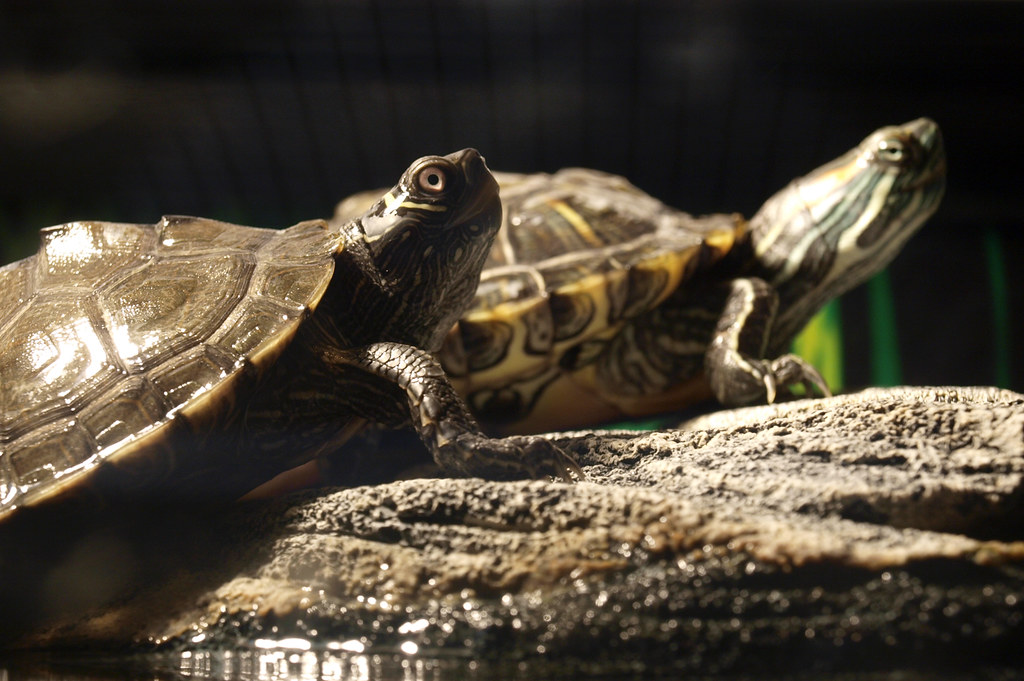




Leave a Reply